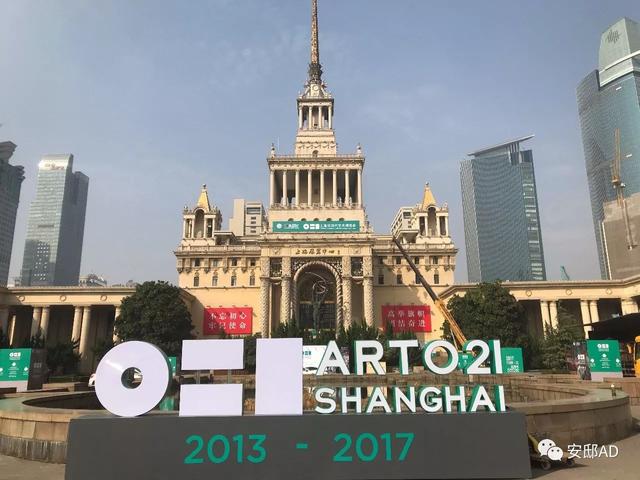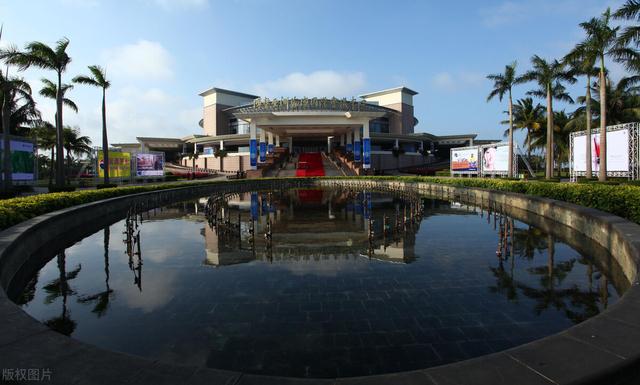中国商事仲裁与调解的新发展

《商法》China Business Law Journal 是国际市场领先的双语法律月刊,专为从事中国跨境投资之决策者、公司法务及中外律师提供实用法律建议及深度分析。
中国仲裁的最新发展使我重新思考我在《仲裁在中国:法律与文化分析》(哈特公司2013年出版)一书中提出的问题:诸如中国这样的新型经济参与者将如何适应国际仲裁融合趋势?随着世界各国仲裁法律与实践的融合发展,中国是否正呈现适应国际仲裁当前趋势的迹象?中国的法律文化是否会影响国际仲裁的发展?
我对这些问题的回答仍然是肯定的:两方面的适应都在发生。一方面,中国正在做出调整,使其仲裁实践更加符合国际标准。另一方面,中国正在带来一些可能影响其他地方仲裁实践的创新。这些发展发生于中国启动雄心勃勃的经济发展计划,即“一带一路”倡议,并在世界经济中发挥主导作用的重要时刻。
最高院的作用
最高人民法院的解释。司法解释虽然不具有宪法所规定的国家法律的效力,但实践中却发挥着重要作用。它们不仅解释或澄清国内法,而且补充国内法,特别是在法律变化迅速的领域以及法律无法解决新问题的领域。
《仲裁法》实施后,最高人民法院针对我国法院适用相关法律和条约出台了一系列司法解释。实践中,这些司法解释为下级法院适用《仲裁法》提供了重要指导,也填补了《仲裁法》未曾涉及的解释空白。自2017年5月以来,最高人民法院又相继出台了一系列司法解释和文件,从而标志着中国仲裁发展的又一重要里程碑。这些解释和文件在一定程度上弥补了《仲裁法》和《最高人民法院关于适用〈中华人民共和国仲裁法〉的解释》的不足。
指导性案例。一个有意思的现象是中国最近建立的指导性案例体系及其对仲裁的潜在影响。虽然法学学者大多认为指导性案例对下级法院无法律约束力,但这并不排除指导性案例事实上对下级法院具有约束力的可能性,即若不适当考虑指导性案例,法院的裁判将被上级法院推翻
(BjornAhl,RetainingJudicialProfessionalism:TheNewCaseGuidingMechanismoftheSupremePeople’sCourt”,pp.121-139)。据报道,在一些仲裁程序中,指导性案例已经被作为实体规则之来源而被适用
(MarkJia,“ChineseCommonLaw?GuidingCasesandJudicialReform,129HarvardLawReview2213(2016),p.2226)。当在中国进行仲裁或者中国法适用于争议实体问题时,指导性案例可能对仲裁员所做决定产生何种影响,还有待观察。
一带一路及国际商事法院
另一个值得一提的发展是中国雄心勃勃的“一带一路”倡议,这项倡议有可能重塑全球社会经济格局。“一带一路”的核心特点之一是强调法治,包括创建一套“一带一路”项目所需要的有效的纠纷解决机制。就此而言,中国新近设立的两家国际商事法庭值得关注。我认为它们就是双向调整的例子。
一方面,中国国际商事法庭的成立紧随国际仲裁发展的一项趋势,即在国内法律体系中成立国际商事法庭以解决跨境商业事务,比如新加坡国际商事法院。另一方面,中国国际商事法庭通过建立多元化的纠纷解决机制,允许当事人在调解、仲裁和诉讼中进行选择,也体现了中国的创新。中国国际商事法庭建立的“一站式”纠纷解决机制,可以更好地促进调解、仲裁和诉讼相互衔接,从而使得“一带一路”背景下的国际商事纠纷得到公正、高效、便捷的解决。
投资争端调解
还有一项有趣的发展是2017年6月28日内地与香港签署的《内地与香港关于建立更紧密经贸关系的安排》(简称《安排》)的投资协定,其中将调解作为解决投资者与国家间争端的方式。这一做法符合投资者与国家争端解决的最新趋势。因为在国际投资协定中,将调解融入“投资者-国家”争端解决机制得到越来越频繁的体现,并且融合方式正发生变化,即:从仅在仲裁程序“冷却期”中简单地提及调解,到将调解作为仲裁替代方式提出,再到并入综合的“投资者-国家”调解规则的新近倡议。
调解为投资者和国家解决投资活动中产生的争端提供了一种可靠的、令人信服的选择。鉴于“投资者-国家”仲裁正变得日益对抗、日渐冗长、日趋昂贵,甚至越来越司法化,即使对胜诉者而言,最终结果可能也不尽如人意,所以,在“投资者-国家”争端解决中,更多使用调解这一方式已不在于“应否”,而是在于“如何”。
《安排》投资协定的调解条款中包含着有关“投资者-国家调解”非常详细、有益的表述,可以作为“如何”鼓励使用调解解决“投资者-国家”争端的范例。
展望:中国的适应
中国对国际标准的适应。为逐步实现仲裁法律与实践符合国际标准,中国进行了严谨的法律改革。从经济角度看,此类调整在意料之中。仲裁是服务行业,是在“法律市场”中竞争的行业之一。愿意仲裁的当事人可以在合同中选择适用的法律、仲裁地和仲裁机构。为了吸引国际商业,国家努力实施利于仲裁的法律,并承诺其法院将执行仲裁协议以及仲裁裁决的结果。
当前,仲裁机构通过制定现代化的仲裁规则、聘任专业的仲裁员、组织仲裁沙龙和会议来推广仲裁服务,在全球范围内为解决国际商事纠纷而竞争。其他专业组织(如国际商事仲裁理事会、ITA等)则通过组织各类仲裁会议,并为仲裁从业人员提供业务培训,使其熟悉仲裁游戏规则。更有越来越多的教育机构开设了有关国际商事仲裁的课程,甚至专门的硕士项目,从而有利于形成仲裁共同体的共同规范。总之,正如我们在当前环境中所看到的那样,不同形式的仲裁可能凝聚在一起形成国际仲裁共同体中的共同文化。
全球化的本土化:中国的创新。中国正在经历一种“选择性适应”的过程,比如中国创新和中国实践对别国争端解决机制演变的潜在影响,我们可以称之为“全球化的本土化”。
中国创新的一个例子就是中国国际商事仲裁中心建立的“一站式”多元国际商事纠纷解决机制。这种灵活的纠纷解决方式和多元化的纠纷解决机制与不断变化中的“形式主义”和“非形式主义”纠纷解决机制的一般演变路径相符。仲裁是为应对过度形式主义的法院诉讼而发展起来的。当事人对新的程序性权利的不断需求,使得人们批评仲裁变得太贵、太慢、太程序化和司法化,并且跟法院程序越来越相似。
这种过度形式化的仲裁将不可避免地导致以非正式、非程序化以及灵活性为特征的新的争议解决方式的发展(其中可能包括不同方式的结合),这些新的争议解决方式将更关注当事人的利益以及当事人和平关系的重建,而不是单纯地分出胜败。中国式多元化纠纷解决机制是以人为本、人际关系导向、灵活温和的。它符合一般法律演变的趋势,而且确实可能是东方与西方法律机制的交汇点。
作者:麦吉尔大学副教授樊堃,文章基于其在北仲举办“多伦多·2019中国商事争议解决高峰论坛”发言整理而成。
北仲高级顾问鲁洋博士对文章亦有贡献。
附:英文原文
New Developments In Commercial Arbitration And Mediation
The recent developments on arbitration in China made me think about questions I raised in my book, Arbitration in China: A Legal and Cultural Analysis, published with Hart in 2013. How will new economic players such as China react to the movement of harmonization of international arbitration? With the harmonization of the law and practice of arbitration worldwide, is China showing signs of adapting to the current trend of international arbitration? Will Chinese legal culture influence the evolution of international arbitration?
My answers to the questions remain affirmative: adaptations in both directions are taking place. On the one hand, China is making adaptations to bring its practice more in line with international standards. On the other hand, China is bringing innovations that may influence the practice elsewhere. These developments also come at an important time, with China launching an ambitious program of economic expansion, the Belt and Road Initiative (BRI), and approaching a leading role in the world’s economy.
IMPORTANT ROLE OF SPC
SPC interpretations. Although judicial interpretations do not carry the force of national laws under the constitution, they play a crucial role in practice. They not only interpret or clarify, but also supplement national laws, particularly where an area is changing rapidly and the national legislation is not equipped to deal with new issues that have emerged.
After the Arbitration Law came into force, the Supreme People’s Court issued a number of judicial interpretations concerning the application of relevant laws and treaties by Chinese courts. In practice, the court’s judicial interpretations provide important guidance for lower courts on the application of the Arbitration Law and also fill interpretative gaps not addressed. Since May 2017, the court successively promulgated a series of judicial interpretations and documents, which marks another major milestone in the development of arbitration in China. These interpretations and documents, to some extent, plug the deficiency gaps in the Arbitration Law and the courts’ interpretation on its application.
Guiding cases. An interesting phenomenon is China’s recently established Guiding Cases System and its potential impact on arbitration. Though the majority view among legal scholars is that guiding cases are not legally binding on lower courts, “this does not exclude the possibility that guiding cases are factually binding on lower courts, i.e., court decisions will be overturned by a higher level court if decisions do not properly take account of guiding cases” (Björn Ahl,“Retaining Judicial Professionalism: The New Case Guiding Mechanism of the Supreme People’s Court”, pp. 121-139). It has been reported that “guiding cases have been applied as sources of substantive rules in a number of arbitral proceedings” (Mark Jia, “Chinese Common Law? Guiding Cases and Judicial Reform, 129 Harvard Law Review 2213 (2016), p. 2226). It remains to be seen what impact guiding cases may have on arbitrators’ decision-making when arbitrating in China or when Chinese law is applicable to the merits of a dispute.
BELT AND ROAD AND CICCS
Another interesting development to be highlighted is China’s ambitious BRI, which has the potential to reshape the global socio-economic landscape. One core feature of the BRI is the emphasis on the rule of law, including efforts to develop an effective dispute resolution mechanism, which suits the needs of the BRI projects. In this context, it is worth noticing the recent establishment of the two China International Commercial Courts (CICCs), which are examples of two-way adaptations.
On the one hand, the CICCs’ establishment follows an interesting development compelling worldwide: the emergence of “international” commercial courts created within a domestic legal system to resolve cross-border commercial matters, such as the Singapore International Commercial Court (SICC).
On the other hand, the CICCs also demonstrate a Chinese innovation by establishing a comprehensive multiplex dispute resolution mechanism, allowing the parties to choose between mediation, arbitration and litigation.
The “one-stop” dispute resolution mechanism established by the CICCs could better facilitate the interconnection between mediation, arbitration and litigation, and thus enable a fair, efficient and convenient resolution of international commercial disputes in the context of the BRI.
MEDIATION OF DISPUTES
This interesting development is the Mainland and Hong Kong Closer Economic Partnership Arrangement (CEPA) Investment Agreement, signed on 28 June 2017, which chooses mediation as the means of dispute settlement for investor-state disputes. This is in line with a recent trend in investor-state dispute settlements (ISDS). The integration of mediation into an ISDS system is becoming more frequently reflected in the IIAs, and that there is a move from a simple mentioning of mediation in the cooling off period in the arbitration proceedings, to singling out mediation as an alternative to arbitration and, to the more recent initiative, which incorporates comprehensive rules of investor-state mediation (ISM).
Mediation presents a credible and option for both investors and states to settle disputes arising from investment activities. Investor-state arbitration is becoming more confrontational, lengthier and costlier, and more judicialized. The final result may be un- satisfying, even to the winning party. So, the issue of increased use of mediation for the ISDS is not whether, but, rather, how it is applied.
The mediation clauses contained in the CEPA Investment Agreement have specific and conducive language about ISM and may offer an example of “how” to encourage the use of mediation to resolve the investor-state disputes.
ADAPTATIONS OF CHINA
Chinese adaptations towards international standards. China has made rigorous legal reforms to bring its arbitration law and practice in line with transnational standards. From an economic perspective, such adaptations come as no surprise. Arbitration is a service industry, evolving as part of the competition within the “law market”.
Parties that desire arbitration can choose the applicable law, the seat of arbitration, and the arbitration institutions in their contract. In order to attract international commerce, states endeavour to implement arbitration-friendly laws and to commit courts to enforce arbitration agreements and the resulting arbitral awards. Arbitration institutions now compete worldwide for the business of resolving international commercial disputes by modernizing their arbitration rules, hiring professional arbitrators, and organizing arbitration seminars and conferences to promote their services. Other professional organizations (such as the ICCA or ITA) organize various kinds of arbitration conferences and provide professional training for arbitration practitioners to familiarize them with the rules of the game. An increasing number of educational institutions have developed courses on international commercial arbitration or even a specialized master’s programme, which also plays a role in forging the shared norms of the arbitration community. As a result, we can see in today’s setting that different types of arbitration may converge to form a common culture in the international community.
Globalized localism: Chinese innovations. A dynamic of “selective adaptations” is taking place in China, with some examples of Chinese innovations and potential influence of the Chinese practice on the evolution of dispute resolution mechanisms elsewhere, which we can call “globalized localism”.
One example of this Chinese innovation is the “one-stop” diversified inter- national commercial dispute settlement mechanism established by the CICCs. This flexible approach and diversified dispute resolution mechanism is in line with the general evolution of dispute resolution mechanisms in the constant switch between “formalism” and “informalism”. Arbitration was developed in reaction to the excessive formalism of the courts. As a result of parties’ constant demand for new procedural rights, arbitration is now criticized as having become too expensive, too slow, too proceduralized and judicialized, and more similar to court procedures.
This excessive formalization of arbitration will inevitably lead to the development of new forms of dispute resolution (which may include combinations of different methods), featured by informalism, deproceduralization and flexibility, focusing more on the parties’ interests and re-establishing peace between them rather than sending them home with a winner and a loser. The Chinese approach of a diversified dispute settlement mechanism is people-orientated, relationship-focused and tempered with flexibility. It appears to be in line with the trend of the legal evolution, and may indeed be a point of convergence where the East meets the West.
Fan Kun is an associate professor at McGill University. This article is taken from her speech on the BAC/BIAC’s 2019 Toronto Summit on Commercial Dispute Resolution in China. BAC/BIAC’s senior counsel, Lu Yang, also contributed to the article
来源: 北京仲裁委员会
武汉仲裁委员会(武汉国际仲裁中心)总部
- 地址:武汉市江岸区台北路云林街67号
- 电话:027-85711211(前台)
- 027-85711205、85711207
- 85711208、85711209(立案)
- 邮编:430017
武汉仲裁委员会(武汉国际仲裁中心)光谷办公室
- 地址:武汉市关山大道355号光谷新世界
- 写字楼A座7层7-12号
- 电话:027-87151567(前台)
- 027-87151500(立案)
- 邮编:430073
武汉仲裁委员会(武汉国际仲裁中心)受案范围:
武汉仲裁委员会(武汉国际仲裁中心)依法受理平等主体的自然人、法人和其他组织之间发生的民商事争议。
您在签订合同时需要在合同中签署仲裁条款,推荐仲裁条款如下:
因本合同引起的或与本合同有关的争议,应当提交武汉仲裁委员会(武汉国际仲裁中心),按申请仲裁时该会(中心)现行有效的仲裁规则进行仲裁。仲裁裁决是终局的,对各方均有约束力。






















评论